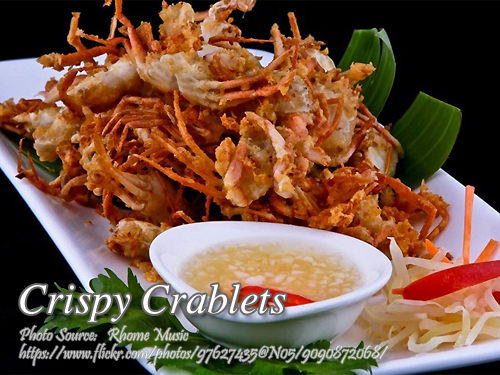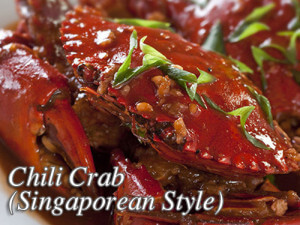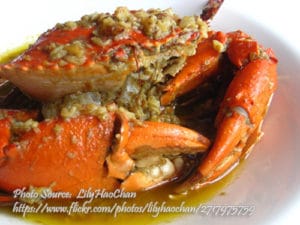Crispy crablets are baby crabs marinated with rum, salt and pepper. Then coated with flour and deep fried. As per instructions, don’t forget to remove the carapace of the crab. It’s the upper shell cover of the crab which is very hard and have spikes which might be unpleasant to eat. Selecting the size of the crablets are also important. The smaller the better about an inch or slightly larger. Because the shells are thinner if the crabs are about that size. And when you deep fry it, the crablets will then become crispy.
Crispy Crablets: A Delightful Bite-Sized Treat
I’ll never forget the first time I tried the dish. It was at a lively family gathering in my Lola’s home in Batangas, where food was always more than just sustenance—it was an expression of love, culture, and creativity. My Tita Josie had just returned from a trip to Palawan, carrying a basket of freshly caught baby crabs. “These are the perfect size for crispy crablets,” she said with a knowing smile, as if she were about to unlock a culinary secret we didn’t know we needed.
Since then, making this crunchy and flavorful dish has become a treasured family tradition. It’s easy to prepare, irresistibly good, and brings back memories of those carefree afternoons when our kitchen was filled with the chatter of relatives and the comforting sizzle of hot oil.
Why Crispy Crablets are So Irresistible
Crispy crablets are more than just a dish; they’re a sensory experience. These baby crabs, fried to golden perfection, deliver a delightful crunch with every bite. The secret lies in the size of the crabs. The smaller they are, about an inch or so, the thinner their shells—making them easier to enjoy without being too hard to chew.
When you take that first bite, you get a satisfying contrast between the crispy exterior and the tender, slightly sweet meat inside. Paired with a tangy vinegar dipping sauce infused with garlic and chili, it’s the perfect harmony of flavors that reminds me of the ocean’s bounty.
Preparing the Crablets: An Essential Step
Before diving into the cooking process, there’s one important preparation step that cannot be skipped: removing the carapace. The carapace is the hard, spiky upper shell of the crab. Not only is it unpleasant to eat, but it can also detract from the overall crunchiness of the dish.
I remember how my Kuya Jun used to meticulously remove each carapace while telling us stories about his fishing trips in Zambales. “It’s worth the effort,” he would say. And he was right. This small but significant step ensures the crablets fry evenly, allowing you to fully enjoy their crisp texture.
The Magic of Marination
The marinade is simple yet transformative. A splash of rum, a sprinkle of salt, and a dash of ground black pepper are all you need to bring out the crabs’ natural flavors. The rum acts as a tenderizer, breaking down any toughness in the shells and enhancing the overall taste with its subtle sweetness.
I usually let the crablets marinate for about 15 minutes, just enough time to infuse them with flavor without overpowering their delicate meat. It’s a technique that my cousin Rica swears by, and she’s the undisputed seafood queen of our family.
The Secret to Perfectly Crispy Crablets
Achieving that signature crunch comes down to two key factors: the flour coating and the frying process. After marinating, the crablets are lightly coated in flour. This step creates a thin, crisp layer when fried, giving them that irresistible texture.
For frying, I recommend using a wok and heating the oil to the right temperature. My Lola used to test the oil by dropping a tiny pinch of flour into it; if it sizzled instantly, it was ready. Deep-frying the crablets in small batches ensures they cook evenly and maintain their crunchiness.
The result? A plate of golden, crablets that are perfect for snacking, sharing, or serving as a side dish during meals.
A Bite of History
Crispy crablets are a testament to Filipino ingenuity and love for seafood. In coastal provinces like Pangasinan and Palawan, where crabs are abundant, this dish is a way to make the most of the smaller catch. It’s also a nod to our culture’s emphasis on creating simple yet flavorful dishes that bring people together.
In fact, similar dishes can be found across Southeast Asia, but what sets our crispy crablets apart is the Filipino touch—the use of vinegar dipping sauce, the careful attention to preparation, and, of course, the stories we share around the table.
Serving and Enjoying Crispy Crablets
No plate of this dish is complete without a dipping sauce. My favorite version combines sukang tuba, minced garlic, and a pinch of siling labuyo for a spicy kick. The vinegar’s acidity cuts through the richness of the fried crablets, creating a balance that keeps you reaching for more.
Whenever I serve this dish at home, it’s an instant hit. The kids love the crunch, the adults love the nostalgia, and everyone loves how easy it is to make. It’s a dish that brings us back to our roots, reminding us of the simple joys of Filipino cooking.
So the next time you’re craving a quick and delicious seafood dish, try making it. Trust me, it’s worth the effort—just like Kuya Jun said all those years ago.
How to Cook Crispy Crablets
Ingredients
- 1 kilo crablets
- 1 tsp ground black pepper
- 3/4 cup rum
- 200 grams flour
- 1 tsp rock salt
- 2 cups cooking oil
Instructions
How to Cook Crispy Crablets
- Wash crablets and drain thoroughly. Remove and discard the carapace of each crablets.
- In a clean mixing bowl, combine crablets, rum, salt and ground black pepper.
- Mix and marinate for 15 minutes. Sprinkle and mix flour to marinated crablets.
- Heat oil in a wok and deep fry crablets until crispy.
- Drain excess oil. Serve with vinegar sauce.
Notes
Cooking Tips:
Choose the Right Size of Crablets
When selecting crablets, opt for smaller ones, about an inch or slightly larger. Their thinner shells become crispier when fried, making them easier and more enjoyable to eat. Larger crablets may result in tougher shells, which can diminish the dish’s signature crunch.Marinate for Maximum Flavor
Let the crablets marinate in rum, salt, and pepper for at least 15 minutes. This step enhances the natural sweetness of the crabs while the rum tenderizes the shells for a crispier finish. A well-seasoned marinade ensures the flavors penetrate every bite without overpowering the delicate taste of the crablets.Fry at the Right Temperature
Ensure the oil is hot enough by testing with a pinch of flour; it should sizzle immediately but not burn. Fry the crablets in small batches to maintain even cooking and prevent the oil temperature from dropping. This technique ensures the crablets come out golden and crispy, with no soggy or undercooked pieces.





